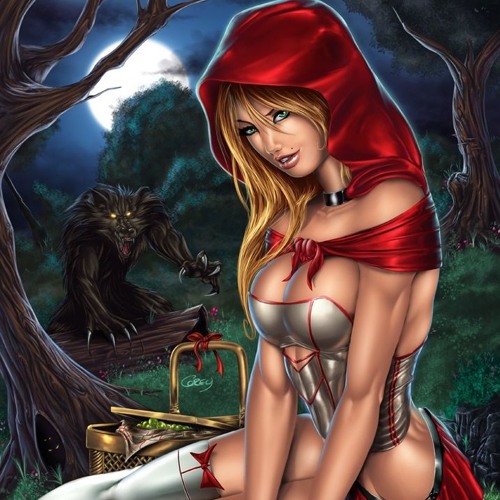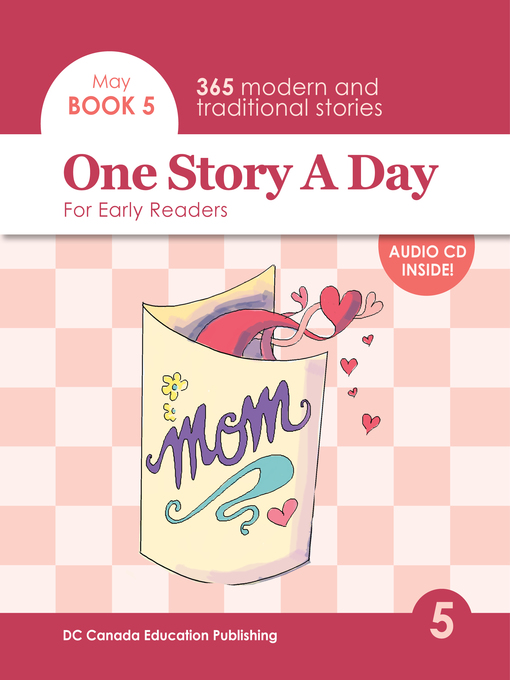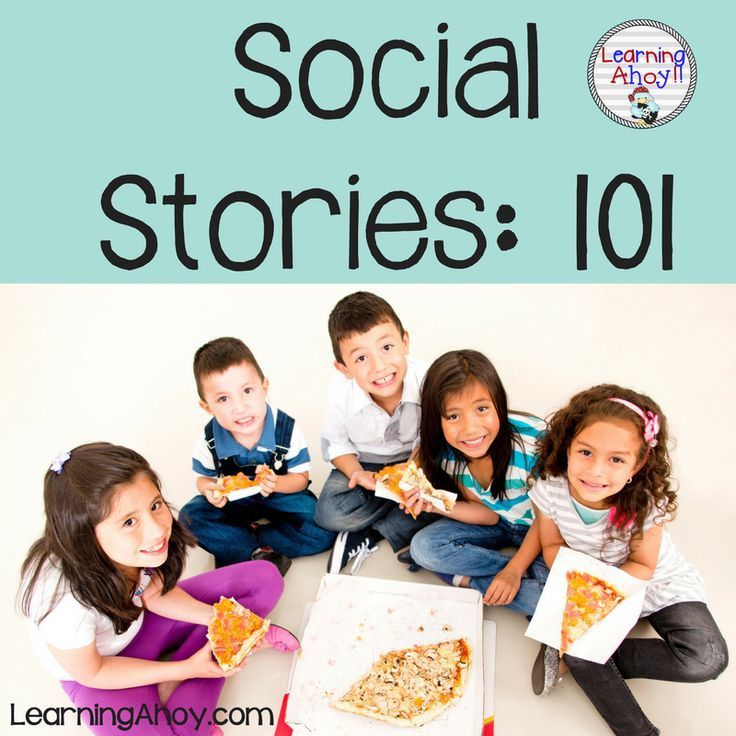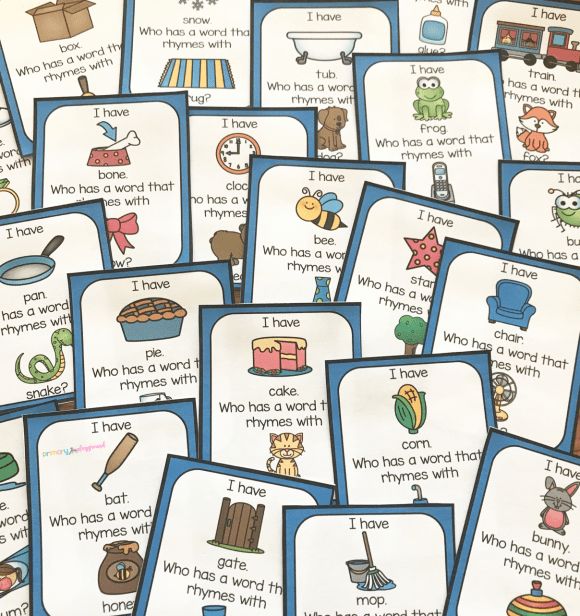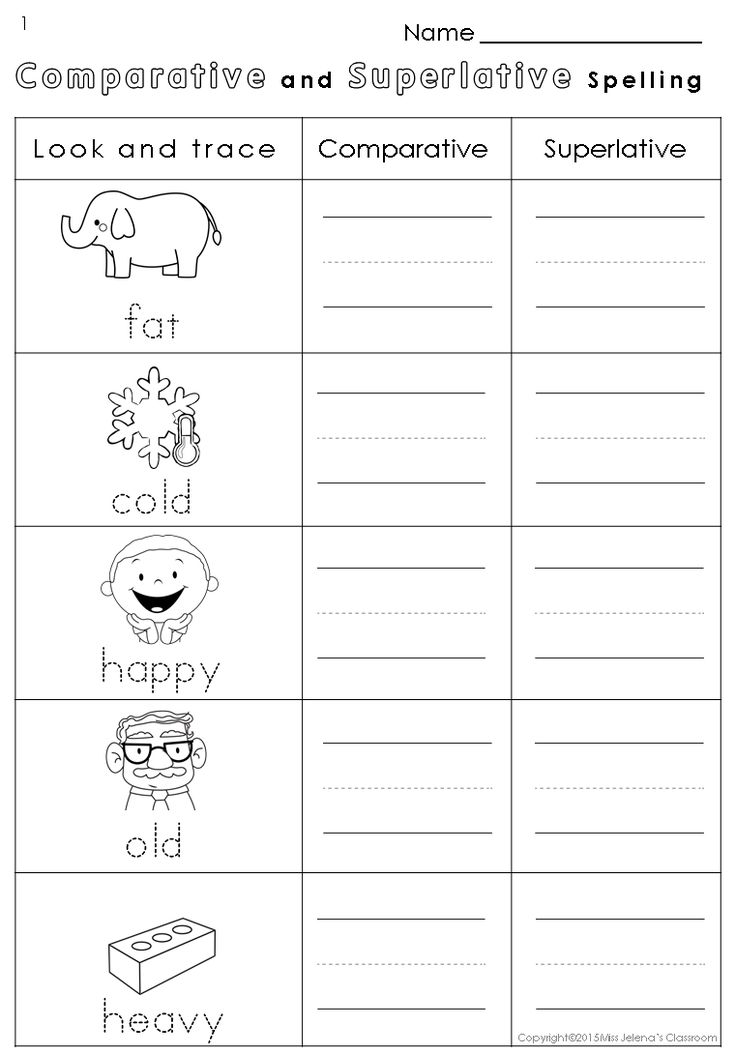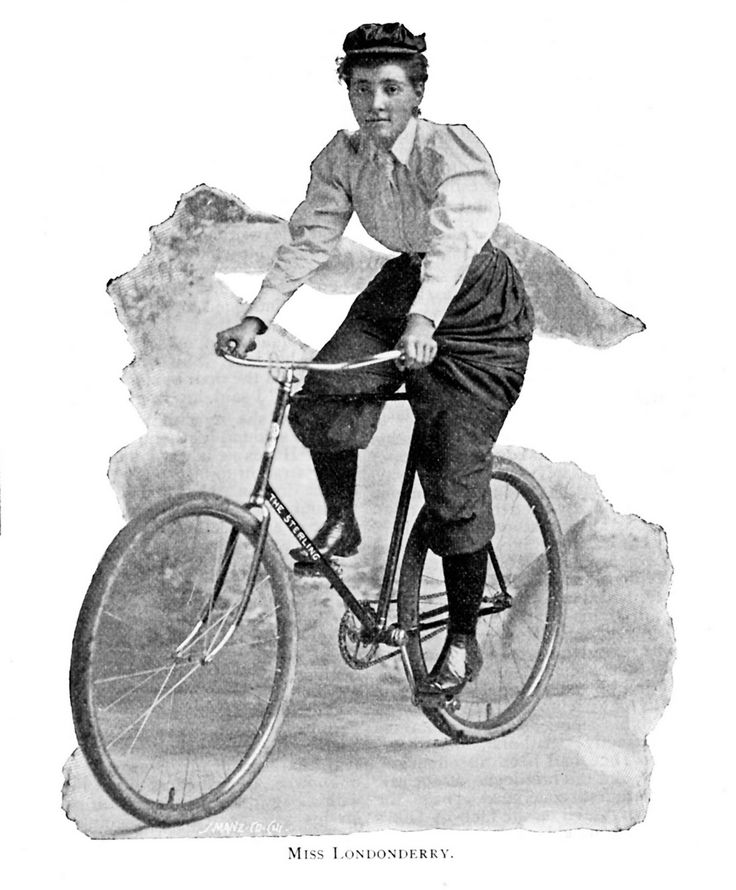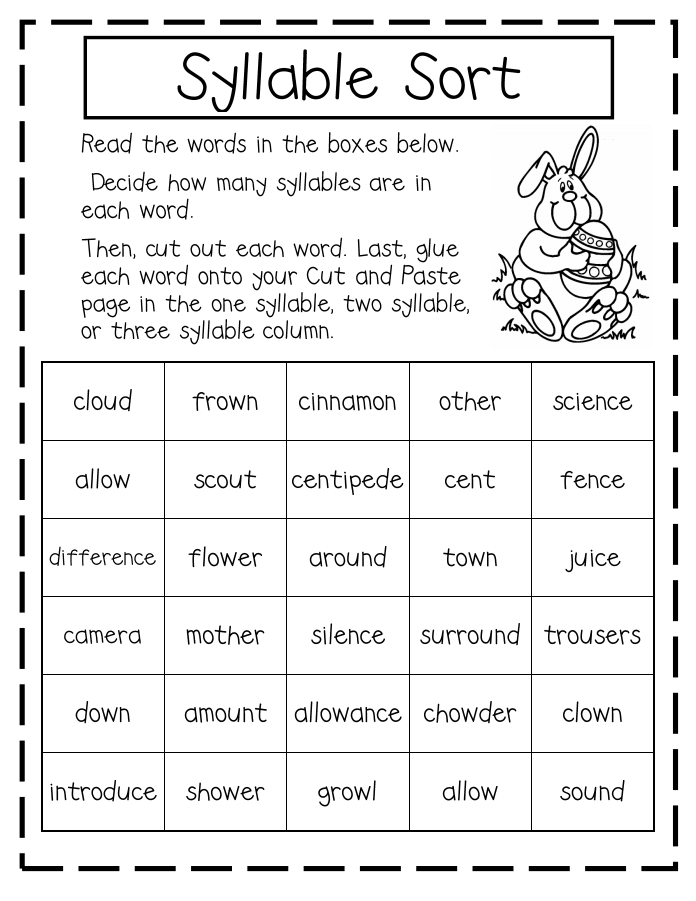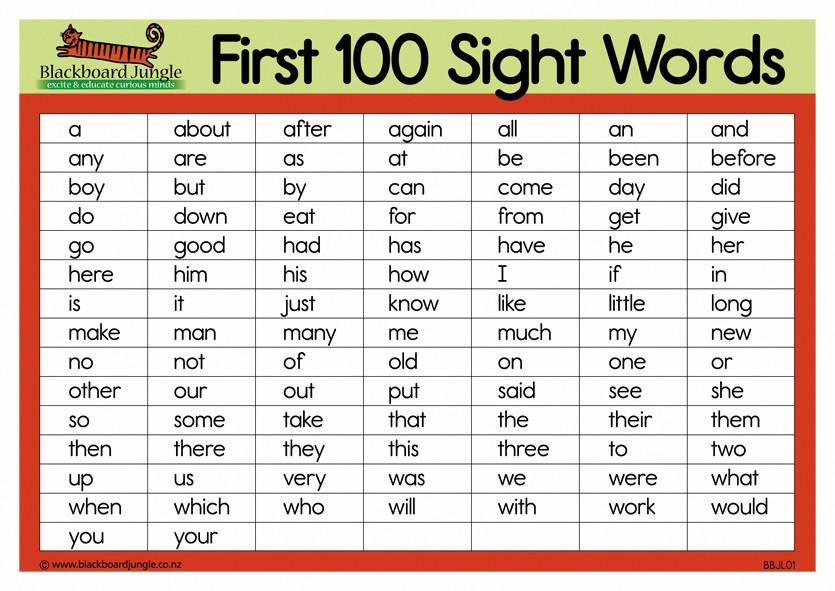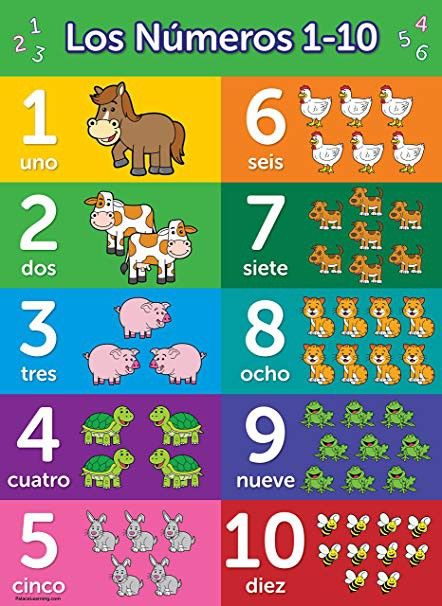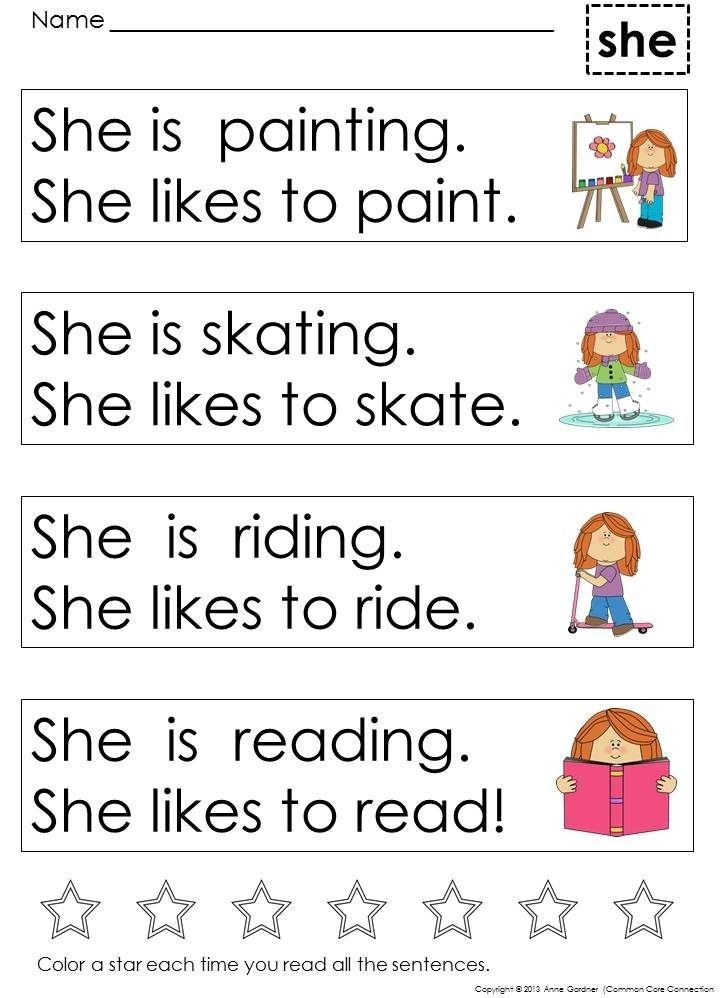Little red riding hood point of view
Point Of View - Expanded - Questions
I'm trying to integrate my understanding of traditional point of view concepts (e.g. first person, third person etc) and dramatica's four throughlines. If I'm writing in two first person's povs (Main Character and Impact Character), how do I get the Overall Story throughline and the Relationship (MC/IC) throughline across? Asked differently, can I write all four throughlines from the eyes of one character, say the Main Character?
The throughline perspectives are completely different than “voice” which tells the story (first person, third person, etc.). For example, let’s look at the fairy tale, “Little Red Riding Hood.” I’ll have to add a bit of material because the tradition version of the story is almost all Overall Story material, material developed from the objective, external, “big picture” perspective.
Overall Story: A young girl sets out to bring a basket of goodies to her grandmother. On her way through the forest, she meets with a wolf who convinces her to take another path with the promise that it is a shortcut. In fact, it is a longer path that delays the girl’s arrival at her grandmother’s house. In the extra time it took the girl to get there, the wolf was able to get to the house first, eat her grandmother, and then dress as the grandmother in order to fool the girl to get close enough to eat. The girl notices that “grandmother” doesn’t look the same but is too late and it eaten. A passing hunter notices and chops the wolf in two, rescuing the girl and her grandmother, who were eaten whole.
Main Character: Little Red Riding Hood is an overly confident twelve-year old girl who gets into trouble because she is impulsive and overly trusting. Her credibility, and often safety, are undermined by her flights of romanticism and fantasy.
Influence Character: The Wolf is a vicious, yet charming, man-eater that has seen the game in the forest disappearing due to human hunting. He is hungry and growing desperate.
Relationship throughline: The cat and mouse nature of the relationship between The Wolf and Little Red Riding Hood has The Wolf pretending to be another Traveler in the forest in order to fool and mislead LRRH.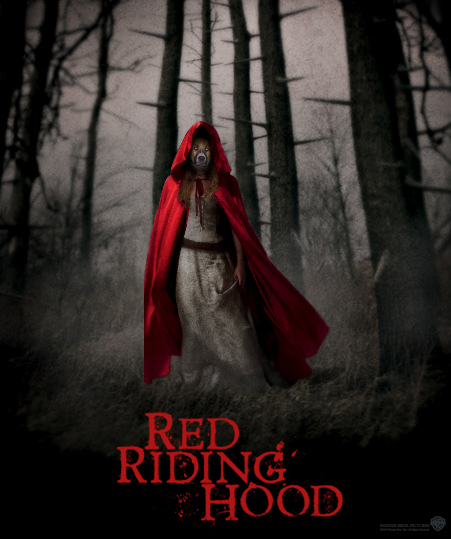 He manipulates her to take a longer path, promising that it is shorter, etc. and later impersonates her grandmother in order to lure LRRH close enough to eat.
He manipulates her to take a longer path, promising that it is shorter, etc. and later impersonates her grandmother in order to lure LRRH close enough to eat.
As you can see, the four throughlines emphasize different aspects of the story. The Overall Story shows the “big picture.” The Main Character shows the personal perspective. The Influence Character shows an alternative, and challenging perspective to that of the Main Character. And the relationship shows the passionate counterpoint to the dispassionate view of the Overall Story. The “point of view” used in telling a story, or what I like to call the writer’s voice, let’s the writer describe the four throughlines as if they were from different perspectives, but are not limited to the views available to those perspectives. Here are some examples:
- FROM THE THIRD PERSON VOICE: Once upon a time there was a little girl named Little Red Riding Hood who was on her way through the forest when she met a wily wolf at a crossroads.
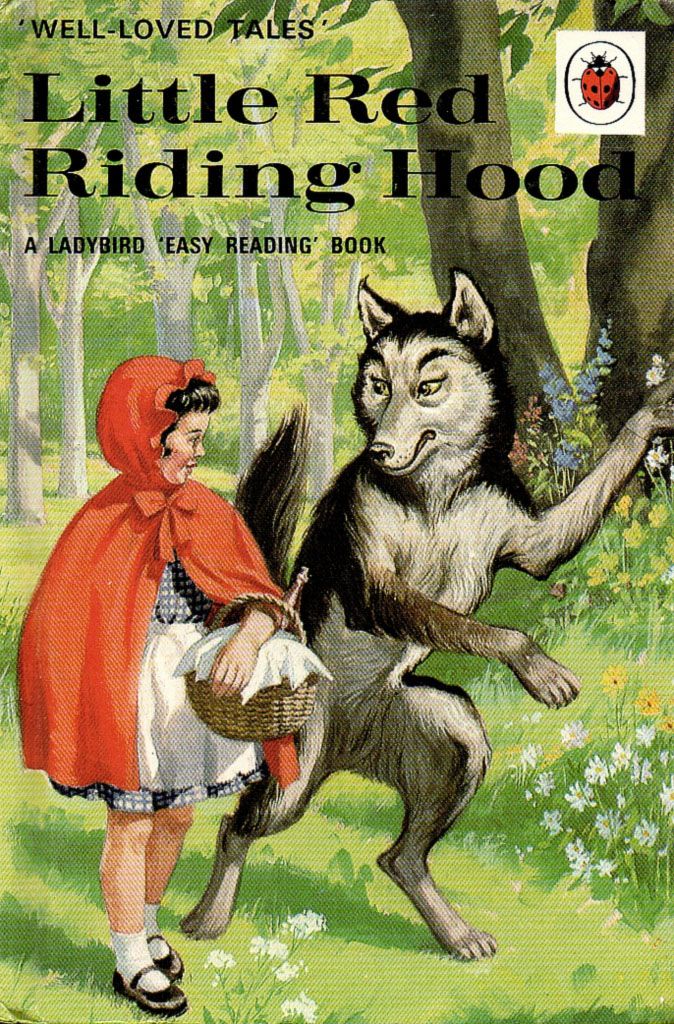 Little Red Riding Hood thought the Wolf was charming. The wolf thought Red smelled delicious and was going to eat her when he found out she was on her way to her grandmother’s house. He thought two meals was better than one, so he tricked Little Red Riding Hood into taking the long way to grandma’s house.
Little Red Riding Hood thought the Wolf was charming. The wolf thought Red smelled delicious and was going to eat her when he found out she was on her way to her grandmother’s house. He thought two meals was better than one, so he tricked Little Red Riding Hood into taking the long way to grandma’s house. - FROM THE FIRST PERSON VOICE: I was skipping along the path through the forest on my way to grandmother’s house when a HUGE, handsome but strange-looking man stepped in front of me. He had a big smile with very white teeth. What I didn’t know at the time was that he was really a nasty wolf dressed to look like a rich man, but I digress. I found the man very charming and helpful and briefly fantasized having a romantic dinner and running my fingers through his hair. After I told him where I was going, he pointed me toward a short cut that should save me lots of time. If I’d been paying a little more attention, I should have noticed the way he drooled as he looked at me, like he wanted to ravish me on the spot, or worse.
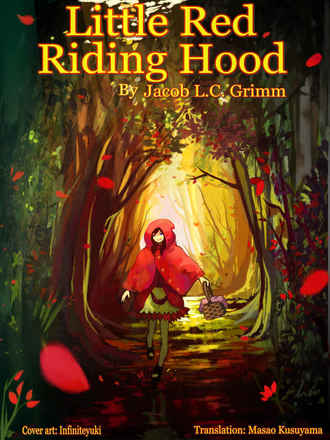
- FROM THE SECOND PERSON VOICE: You were skipping along the path completely unaware of the danger you were in. You didn’t see the Wolf until you’d practically run into him. If you’d known he was a wolf, not a Wolf, you would have run screaming. But this Wolf charmed you instantly. You told him you were going to grandmother’s house, but you could hardly hide your attraction to him. His hunger for you was equally obvious, but the promise of having you AND your grandmother gave him an idea. He convinced you to take another path, “A short cut to grandmother’s house,” he said. And so you took it.
There are elements from all four throughline in each of the three examples. That is the difference between the Dramatica perspectives and the traditional point of view. For novels, use whichever point of view (voice) you want while telling your story. If you ever write a screenplay, scripts are always told in Third Person, present tense.
I've gone through the entire process for one story and am ready to write it.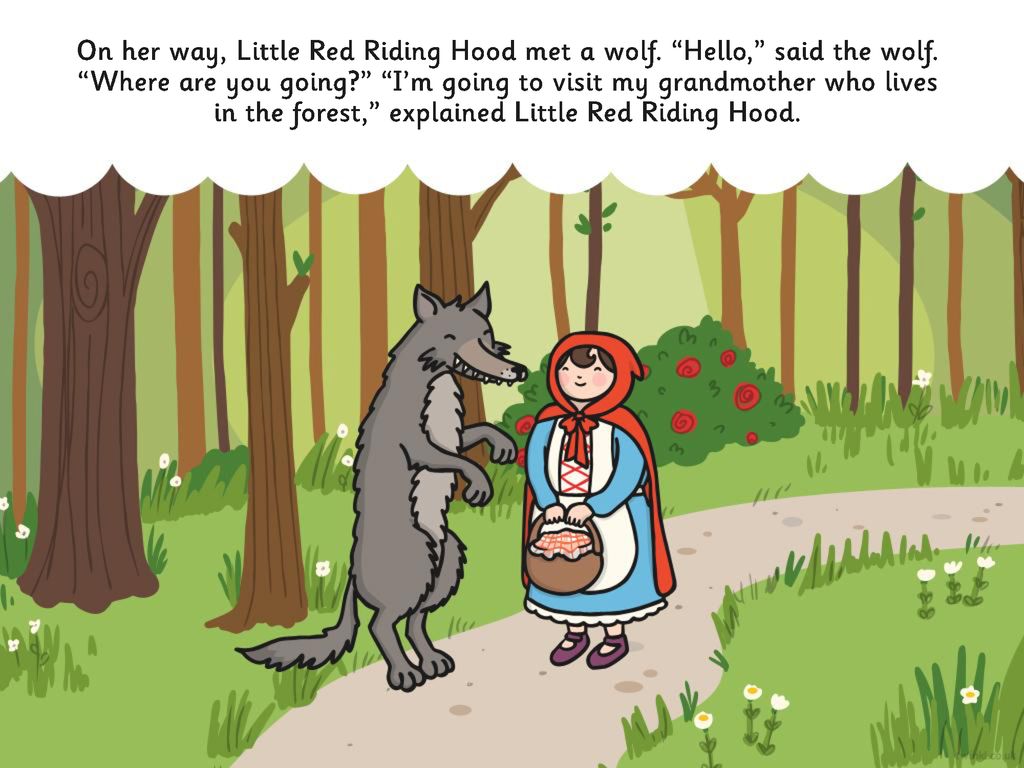 But I want to write the novel in a first-person point-of-view (from the Main Character/Protagonist's POV). With this POV, I don't see how I can present the Influence Character's throughline. It is how the audience would view the Influence Character; yet, the storytelling is colored always by the Main Character's POV. The Main Character's story line and the Relationship Story throughline are easy. The Objective Story throughline is working (although somewhat colored by the MC's POV, too.)
But I want to write the novel in a first-person point-of-view (from the Main Character/Protagonist's POV). With this POV, I don't see how I can present the Influence Character's throughline. It is how the audience would view the Influence Character; yet, the storytelling is colored always by the Main Character's POV. The Main Character's story line and the Relationship Story throughline are easy. The Objective Story throughline is working (although somewhat colored by the MC's POV, too.)
Concerning your question about the Influence Character POV in a predominantly Main Character (first person) story, there are several points to consider. The first and foremost is the relationship between the MC and the IC (the Relationship Story Throughline). The MC has a perspective (world view) that comes into conflict with the world around him/her. The IC is defined by his or her alternative perspective (or world view), and by how that alternative impacts the MC. One of the two perspectives, the MC's or the IC's, will make better sense and have a better feel than the other. Ultimately, one perspective will give way to the other (for better or worse).
Ultimately, one perspective will give way to the other (for better or worse).
It is easy to illustrate the alternate world view, even from the first person narrative form. For example, Jay Gatsby in The Great Gatsby is the Influence Character to the MC and narrator, Nick Carraway. Nick Carraway was raised to be tolerant of other's moral shortcomings. By his presence, Jay Gatsby forces Nick to reconsider this long held belief. Ultimately, to quote our story analysis, "The events that occurred in the summer of '22, however, gave him an aversion to the ways of the corrupt and dissolute, and his essential nature changed."
The Narrator
The narrator's "voice"--no matter which character "vocalizes" it--is that of the author. This means that a narrator, by definition, is not part of the story while they are narrating. So, if the narrator says, "A long time ago in a land far away..." it is not the Character speaking, but the author talking ABOUT the story, not speaking from within the story.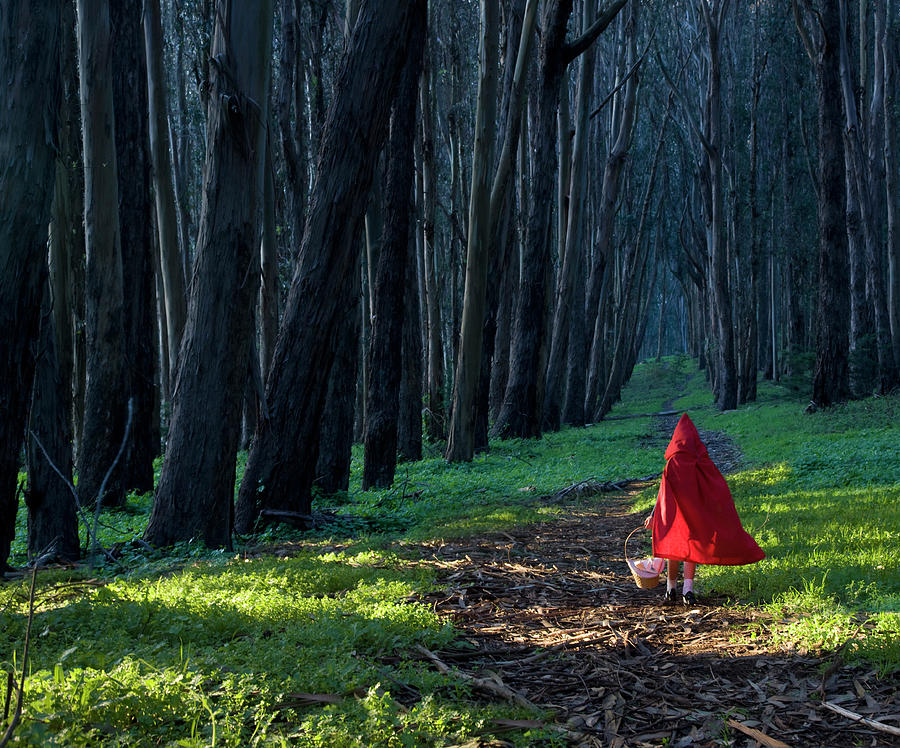 (By Story, I mean a Grand Argument Story, not the type of "work" in which it is expressed, such as novel, screenplay, ballad, etc.)
(By Story, I mean a Grand Argument Story, not the type of "work" in which it is expressed, such as novel, screenplay, ballad, etc.)
Voice vs. Perspective
So now let's talk about the writer's use of voice (first person, second person, etc.) versus the four perspectives in a grand argument story.
An author can choose to tell a grand argument story using only one writer's voice, or several.
Let's use the fairy tale of Little Red Riding Hood (LRRH) as an example. Specifically, let's examine the event where LRRH first meets the wolf.
What are the four throughlines?
- Main Character: Little Red Riding Hood
- Influence Character: Wolf
- Overall Story: LRRH is taking goodies to her ailing Grandmother when she is waylayed by a wolf.
- Relationship Story Throughline: Predator/Prey
Now let's describe all four throughlines using the First Person writer's voice:
MC: "I was skipping along through the forest when a big, black wolf jumped out from behind a tree and blocked my path.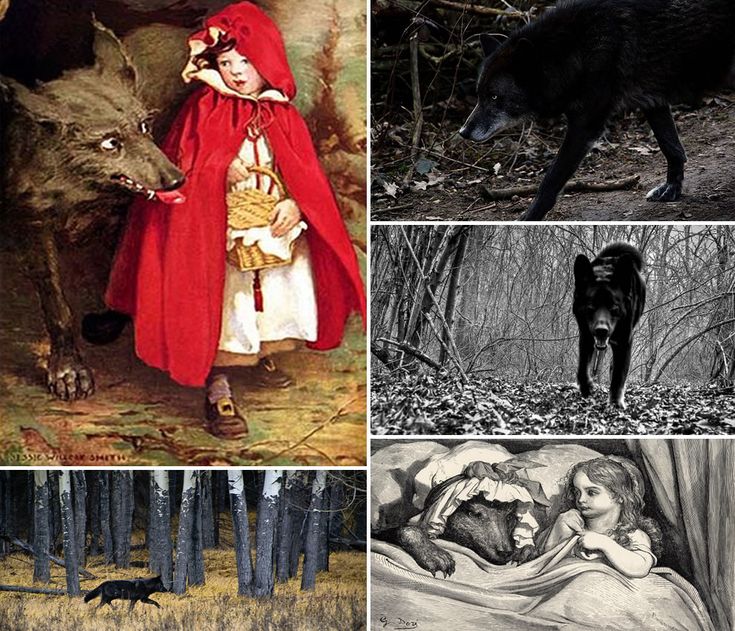 I was so startled, I almost dropped my basket of goodies! Boy, was he a good-looking wolf."
I was so startled, I almost dropped my basket of goodies! Boy, was he a good-looking wolf."
IC: "I could see that you liked me by your staring glaze and crooked smile. You wanted more from me than what was in my basket. My mother had warned me about wolves like you."
OS: "What I didn't see was that there was a hunter with a big ax that was searching the forest for the wolf. It seems that the wolf had killed several of his sheep the night before. The wolf knew the hunter was nearby and that made him very nervous."
MC/IC: "The more I thought about it, the more it seemed that the wolf and I had a lot in common. We were both alone together on a desolate forest path, looking for companionship. Sure, he might see me as a tasty morsel, but who says he so safe from he? You know, I think we might make quite a pair...given the right circumstances."
So, for the little examples above, you can see that the four throughlines can be expressed from the first person perspective.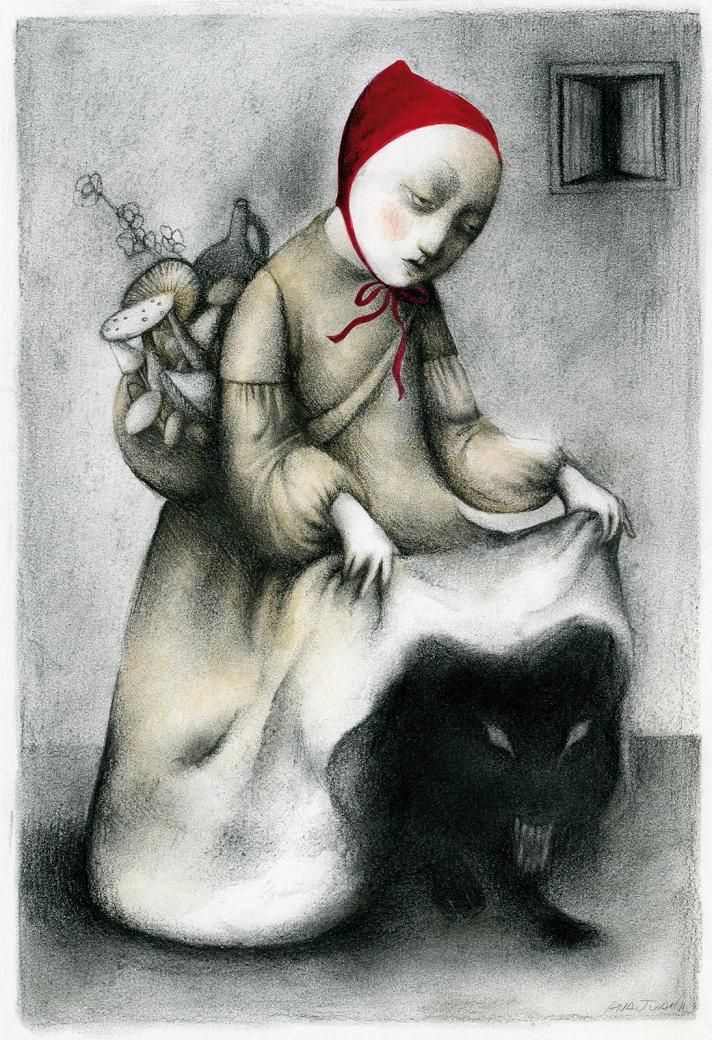 In the MC example, the narrator expresses personal (I) observations and feelings. In the IC example, the narrator expresses what the Wolf thinks and feels, and more particularly how the Wolf impacts the MC. In the OS example, the narrator describes events that she could not possible see as LRRH. That's what is meant by the "big picture." In the Relationship Story example, the narrator describes the relationship between LRRH and the Wolf.
In the MC example, the narrator expresses personal (I) observations and feelings. In the IC example, the narrator expresses what the Wolf thinks and feels, and more particularly how the Wolf impacts the MC. In the OS example, the narrator describes events that she could not possible see as LRRH. That's what is meant by the "big picture." In the Relationship Story example, the narrator describes the relationship between LRRH and the Wolf.
You could choose to express the throughlines exclusively in the first person voice, such as the examples above, or you may choose to express them using different voices. Using multiple voices is much trickier because it can be jarring to the reading experience for the audience, but it is a completely viable alternate to the more common "one work--one writer's voice" practice. You may also use the second person voice and third person voice (more traditional) to tell your story.
Section Concepts QnA Homethe next chapter in story development
Buy Now
Professional Dramatica® Story Consulting
© Copyright 1994-2022 Write Brothers, Inc.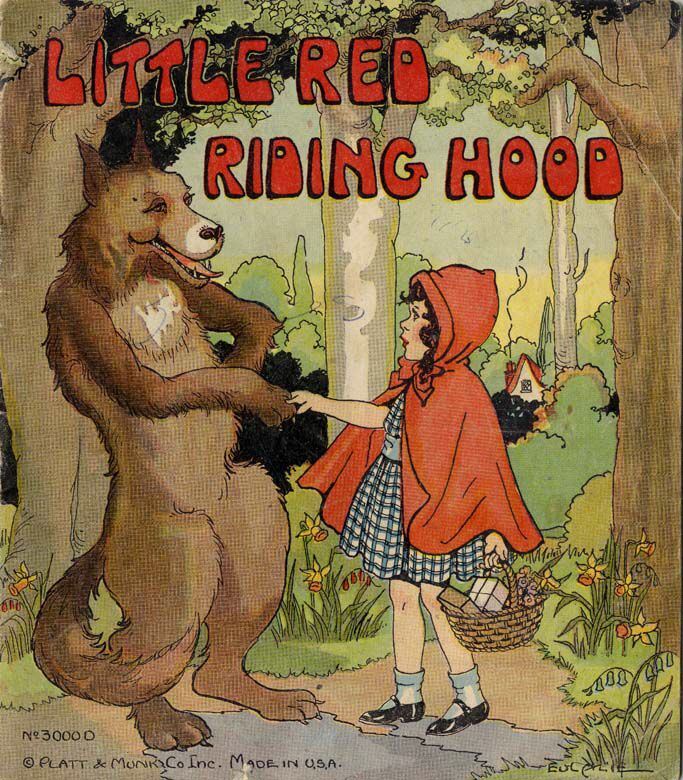 All Rights Reserved.
All Rights Reserved.
Based on theories and materials developed by Melanie Anne Phillips and Chris Huntley.
Dramatica is a registered trademark of Screenplay Systems Incorporated. Patent #5,734,916; #6,105,046
THE WOLF`S PERSPECTIVE – Chicago Tribune
You may be interested to know that the wolves have a different version of Little Red Riding Hood than we do.
It`s not that surprising, really. The meaning of a story and even details change according to the teller`s perspective.
Advertisement
Because life is filled with stories, this is a useful thing to remember. Another person`s version of the truth may seem false, but in fact just be true in a different way.
In any case, here I present (as a scholar might say) the lupine redaction of the Riding Hood tale.
Advertisement
Once upon a time there was a good wolf, always helpful to others, always kind. One day, when walking through the woods on his morning constitutional, he encountered a little girl all dressed in red.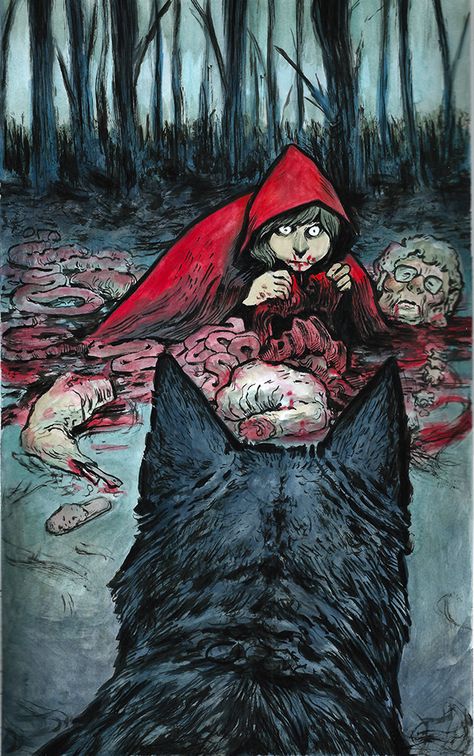 At first he was frightened, because we humans have a history of cruelty to wolves, but he overcame his fear and welcomed her to his part of the woods.
At first he was frightened, because we humans have a history of cruelty to wolves, but he overcame his fear and welcomed her to his part of the woods.
''Where are you going, little girl?'' the wolf asked. ''To my grandmother`s house on the other side of the forest,'' the girl replied. ''My grandmother is very old and very ill, and I am taking her this picnic basket filled with treats to make her young and well again.''
What a sweet little girl, thought the wolf to himself, yet so naive, so unschooled in the ways of the woods, which are the ways of life and death. The more he pondered this, the more worried he became. Perhaps he should have accompanied the little girl, not just to protect her from any who might wish her harm, but also gently to share with her a little of his wisdom, lest, as children often do, she should end up feeling in some way responsible when her grandmother died.
By this time the little girl had quite a head start. Nonetheless, the good wolf put down his walking stick and ran as fast as he could to her grandmother`s house, taking a shortcut he knew, hoping perhaps to accompany the little girl home, during which time they could discuss these things at leisure.
When he arrived at the grandmother`s house, the wolf knocked on her door, unsure whether the little girl had already arrived. There was no answer. He knocked again. Still no answer. The door was unlatched so he entered the cottage, only to discover the little girl`s grandmother lying lifeless in her bed. She had no pulse and was not breathing. Desperately, he attempted artificial respiration, but to no avail.
Just then he heard the little girl singing sweetly in the distance as she approached the cottage. Determined to protect her from the shock of finding her grandmother dead, the wolf had to think fast. Though he had already enjoyed a hearty breakfast and was not in the least bit hungry, he swallowed hard, ate the old woman, tossed on her nightgown, and jumped under the covers. Despite the good wolf`s best intentions, as so often happens, everything went wrong that possibly could. To begin with, his disguise was far from perfect. When the little girl came in, curiosity concerning her grandmother`s appearance led her to ask questions--about the length of her nose, for instance, and the unaccustomed depth of her voice.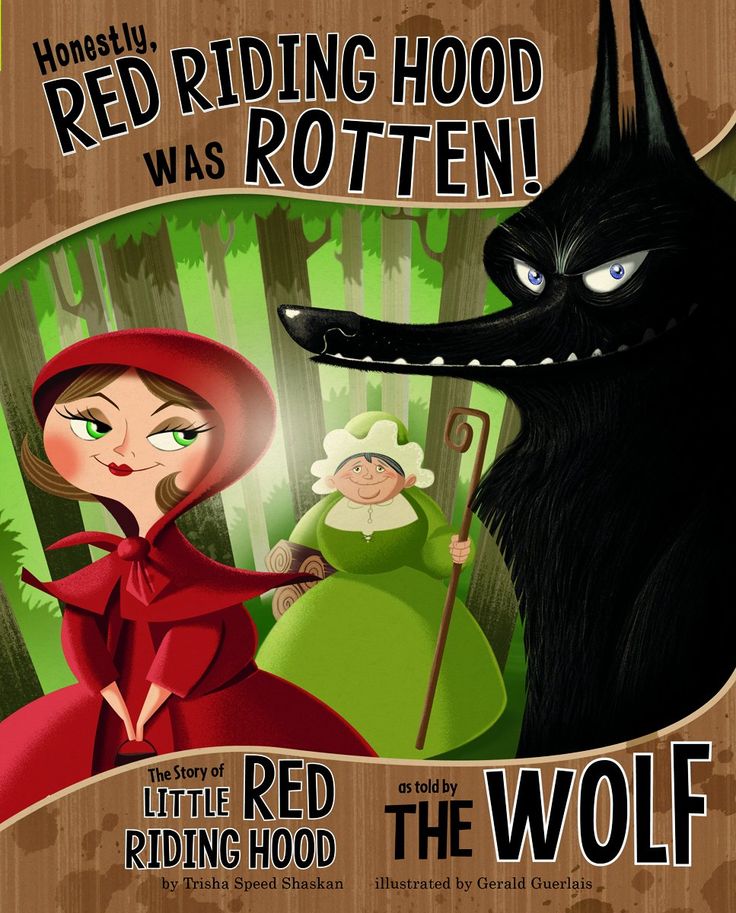 But when she commented upon the size of her grandmother`s teeth and the wolf replied as sweetly as possible, ''The better to eat with, my dear'' (prejudice later added the
But when she commented upon the size of her grandmother`s teeth and the wolf replied as sweetly as possible, ''The better to eat with, my dear'' (prejudice later added the
''you''), the little girl recognized that this was not her grandmother at all, screamed, and ran.
The good wolf pursued her, trying to explain, but before he had the chance, a hunter leapt from the underbrush and shot him dead.
Advertisement
Very sad.
Wolves love this story, I am told, and around the den when Daddy or Mommy are tucking the cubs into bed, it is the one they usually ask to hear, even though they know it by heart. The moral never fails to move them. Even though the good wolf was killed, in a way, he died for all wolves, for through the example of his life, generations of wolves have been inspired to perform unself-regarding deeds of kindness.
There is a second moral as well: Wolves tend to remember events in ways flattering to themselves.
But surely we can forgive them for this.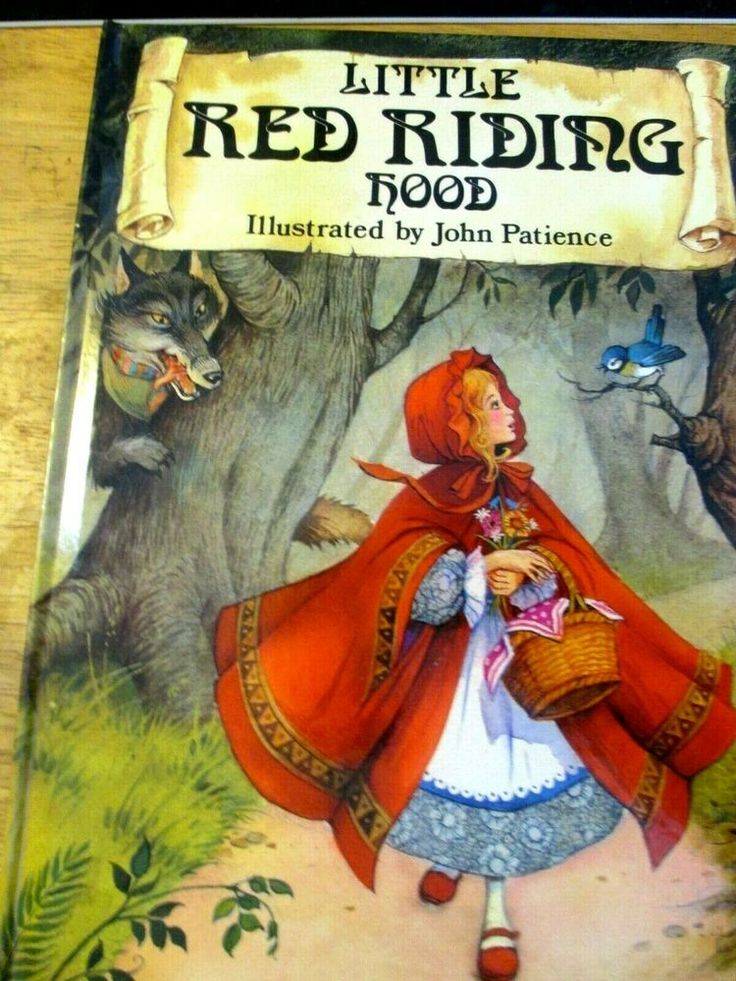 After all, it`s only human.
After all, it`s only human.
Little Red Riding Hood through the eyes of psychologists | Constellation in Rostov-on-Don Irina Vladykina
✔ Active discussion, interesting topics and author's videos about constellations on Irina Vladykina's YouTube channel and in the Telegram constellation community!
Is it possible to finally analyze a fairy tale, is there the only correct understanding of the meaning of fairy tales, myths, legends, parables? The question is not simple. The main thing is to enrich your view, understanding of the tale from different points of view. Let's right now and enrich our understanding of the tale with different interpretations. Let's take the well-known story about Little Red Riding Hood and consider it from the point of view of the main psychological schools.
What might the followers of Sigmund Freud find in this story?
Firstly, , the situation of manifestation of libido associated with the achievement of puberty by a girl.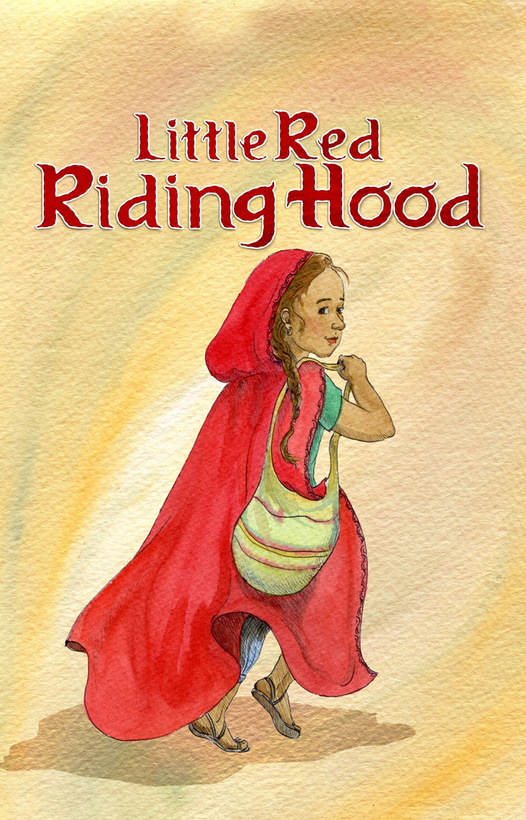 Little Red Riding Hood is a symbol of the first menstruation. A girl in a red cap walking through the forest, as it were, declares to everyone: “Look, I have reached puberty and am ready to start an intimate life!” Little Red Riding Hood's libido is "adventurous".
Little Red Riding Hood is a symbol of the first menstruation. A girl in a red cap walking through the forest, as it were, declares to everyone: “Look, I have reached puberty and am ready to start an intimate life!” Little Red Riding Hood's libido is "adventurous".
Second , the desire to separate from the mother's body. Little Red Riding Hood ignores the danger warning in an effort to get to know the Wolf more quickly. The wolf symbolizes the male figure. Thus, the mother warned her daughter about the dangers of a relationship with a man. But the daughter, striving to become a woman and thereby separate from her mother's body, herself goes straight to the Wolf's mouth. This is how the tendencies of libido and mortido (the desire for pleasure and the desire for death) correlate with each other.
Thirdly, , the conflict between the Id and the Super-Ego with a poorly developed Ego. Little Red Riding Hood is obsessed with the Id, so she ignores the instructions of the Super-Ego, as a result of which she finds herself in a traumatic situation. Being eaten by the Wolf appears to be a punishment from the Super-Ego.
Being eaten by the Wolf appears to be a punishment from the Super-Ego.
Fourth, an indication of "women's chauvinism". At the end of the story, Little Red Riding Hood takes the initiative and fills the Wolf's belly with stones, symbolizing a man's inability to "be pregnant". The fact is that the Wolf, having eaten a grandmother and granddaughter, seemed to “become pregnant”, however, he was “born” as a result of a “caesarean section” performed by lumberjacks. For which he was punished with "newborns."
What can be seen in the story of Little Red Riding Hood from the height of Jungian analysis?
Of course, the manifestation of the main archetypes identified by K.-G. Jung: Animas, Animus, Personas, Shadows, Selves. Little Red Riding Hood symbolizes the young immature Anima, actively seeking to gain experience, to grow up. The wolf in this case may appear as an animus filled with wild, instinctive, aggressive energy. At some point, the Animus absorbs the heroine, gaining a dominant position.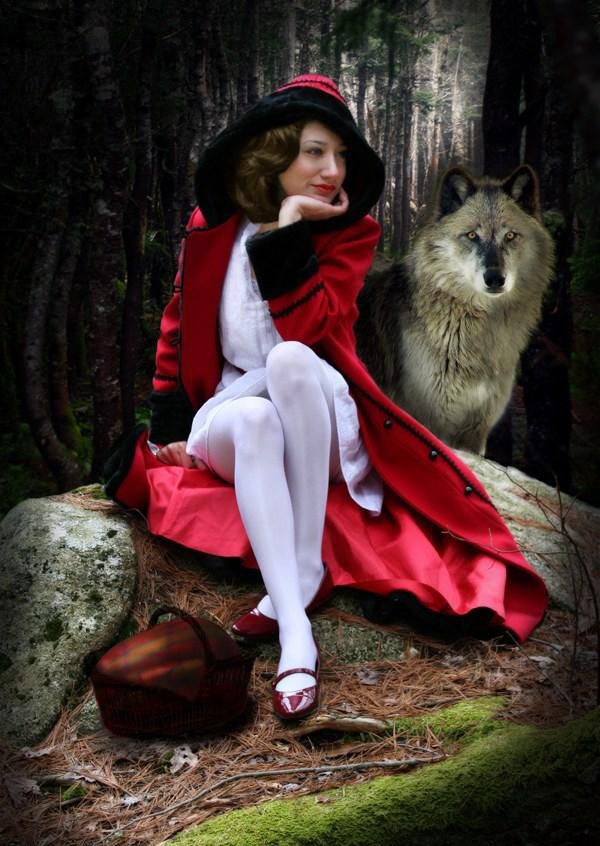 But the heroine copes with this situation and becomes more experienced, mature.
But the heroine copes with this situation and becomes more experienced, mature.
At the same time, the Wolf is a manifestation of the Shadow. At first, the heroine succumbs to her influence, but then she has to fight with her own shadow nature and defeat her. All this speaks in favor of personal growth.
In any case, the immature soul must pass the test, the initiation, in order to become an adult.
If we look at the same story from the standpoint of a behavioral approach, we will be able to evaluate the effectiveness of the behavior of the heroes of the fairy tale. What did Little Red Riding Hood want? Let's say adventure. Did she receive them? Undoubtedly! Therefore, in the general case, its behavior is efficient. However, from the point of view of the heroine's solution of operational tasks, her reactions and style can be criticized. For example, is it really impossible for an adult girl to distinguish her grandmother from a disguised Wolf? Why was she flirting with him instead of running away and calling for help? That is, in these cases, the heroine demonstrates not the most correct way of responding.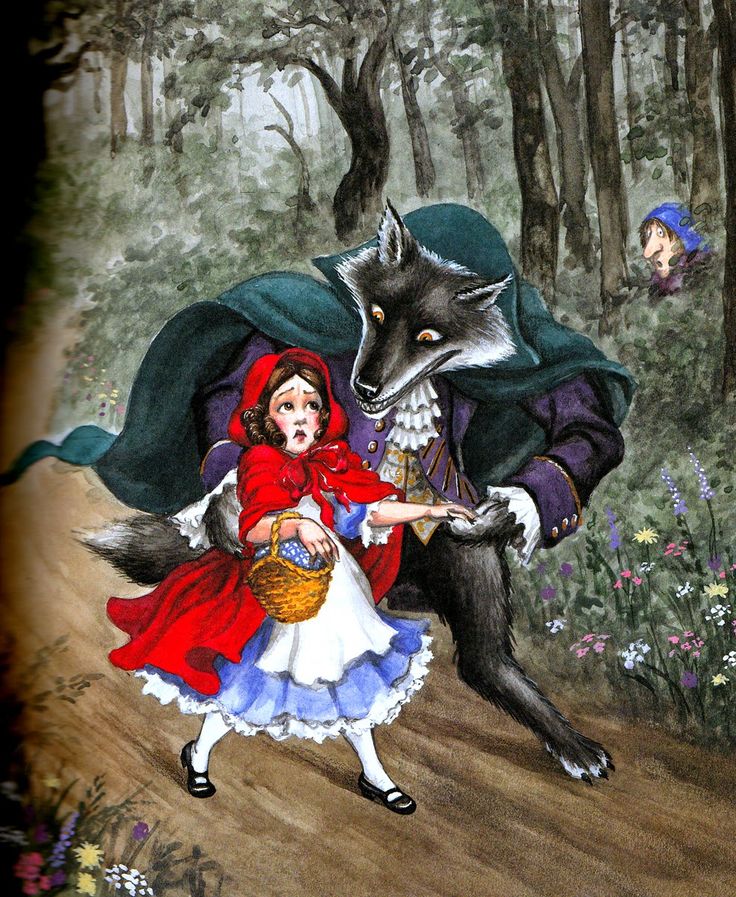
And the Wolf, how effective is he? I must say that his behavior does not stand up to criticism, if only because, as a result, he allows himself to be killed. If he wanted to eat both Grandma and Little Red Riding Hood, then why did he have to dress up as Grandma? It would have been more logical to lie in wait for the girl at the entrance to the house and drag her into the forest before she had time to call for help. In a word, an ineffective Wolf has all the indications for psycho-corrective work.
An interesting aspect for the analysis of this tale from the point of view of the cognitive-behavioral approach is the theme of influence and opposition to influence. What methods of influence does the Wolf use? Manipulation and targeted attack. Is Little Red Riding Hood adept at demonstrating civilized resistance to attack and manipulation? Does it use informational dialogue techniques, psychological self-defense, or at least civilized confrontation? Judging by her behavior, this is happening extremely ineptly and, most likely, unconsciously.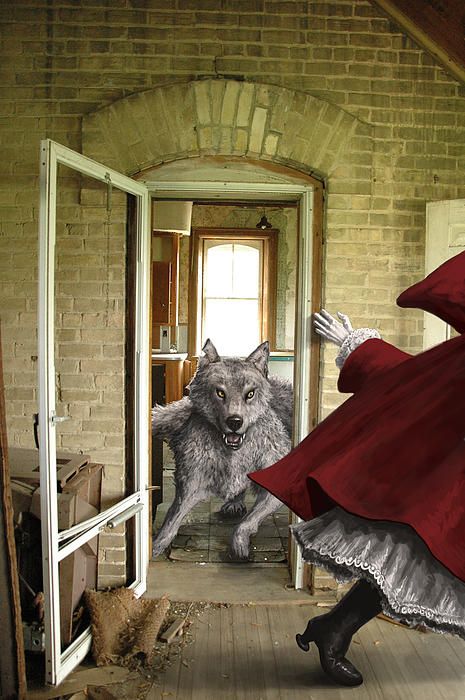 Therefore, it is not surprising that she, unable to resist the manipulation of the Wolf, is subjected (following the Grandmother) to a targeted attack and ends up in the belly of a barbarian. In this light, the meaning of the fairy tale acquires an additional shade: "To the barbarian and the manipulator - barbaric death."
Therefore, it is not surprising that she, unable to resist the manipulation of the Wolf, is subjected (following the Grandmother) to a targeted attack and ends up in the belly of a barbarian. In this light, the meaning of the fairy tale acquires an additional shade: "To the barbarian and the manipulator - barbaric death."
If we look at the same story from the standpoint of the humanistic approach of A. Maslow , then we have to find the needs actualized in the characters and assess the degree of their self-actualization. It is clear that the Wolf has only lower needs actualized, so it is difficult to call him an actualized character himself. He hasn't even taken that path yet. Such non-self-actualized personalities have only one way... under the ax to the lumberjack or "to the dustbin of history."
Little Red Riding Hood actualizes more “higher” needs: belonging and love, self-respect, knowledge needs and aesthetic needs. In fact, she stands in the way of self-actualization, and therefore defeats the Wolf.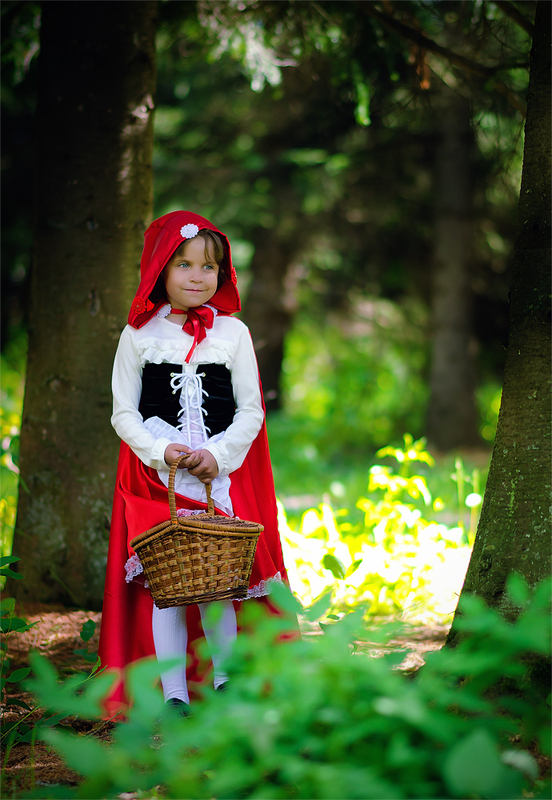 This is how more highly organized individuals defeat beings with a barbaric consciousness! It's like a fairytale.
This is how more highly organized individuals defeat beings with a barbaric consciousness! It's like a fairytale.
Possibly, starting an intrigue with the Wolf, Little Red Riding Hood tests herself, tries to maximize her abilities. All this speaks of her as a person striving for self-actualization.
The storyteller immediately rushes to look for life lessons in the story of Little Red Riding Hood. And, of course, he will find them - and not just one, but several. For example, for young girls and their parents.
Firstly, , the story of Little Red Riding Hood teaches parents to develop independence in children and “let go” of them at the right time. To some, Little Red Riding Hood's mother will seem like a narrow-minded, irresponsible woman. Indeed, how can you send a girl alone into the forest, knowing that she can fall into the clutches of a wolf?! Nevertheless, the wisdom of parents is to “let go” of the child in time, to give him the right to make a mistake, to search independently, to support him with a parental blessing.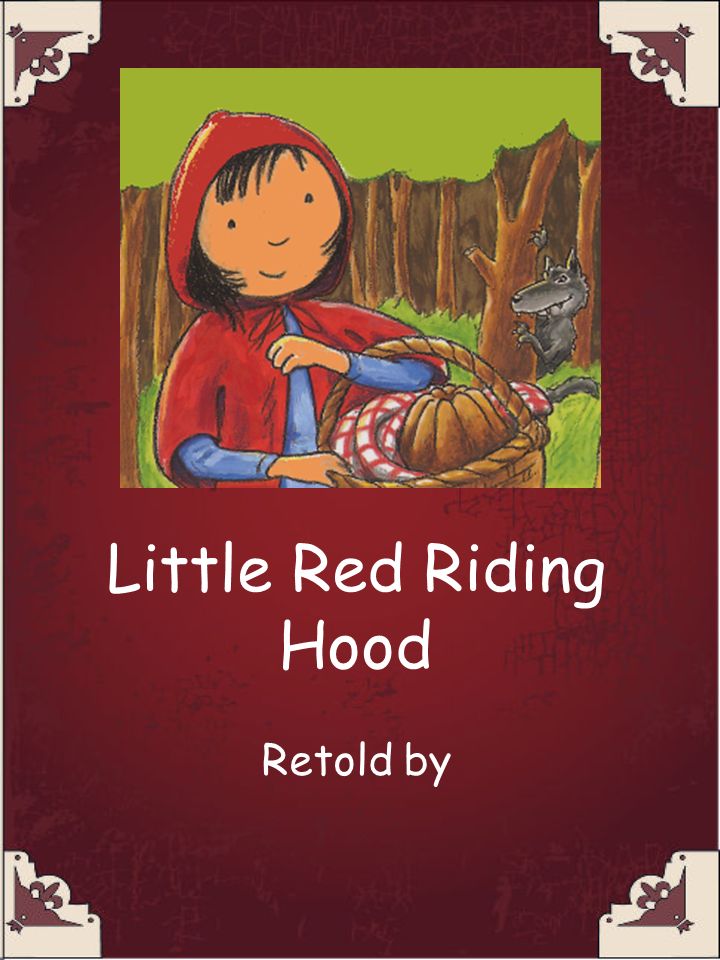
Secondly, , she teaches parents to choose the appropriate form to teach their children about life and warn them of dangers and pitfalls. If Little Red Riding Hood reacted too lightly to her mother's warning, it means that she did something wrong, did not find an approach to her daughter.
Thirdly , this story, as another lesson for parents, illustrates the idea of "forbidden fruit". The more we forbid children in a directive way, the more we ignore their tendency to explore the forbidden and test themselves, the more traumatic the consequences of their actions can be. What can parents do? Finally accept the fact that the young soul is prone to experiment with the "forbidden". It `s naturally.
If Little Red Riding Hood's mother had said to her: “My dear daughter! You have to go through the forest where, as you know, the Wolf lives. Both I and other people talk about its danger all the time. It is possible that this circumstance arouses curiosity in you.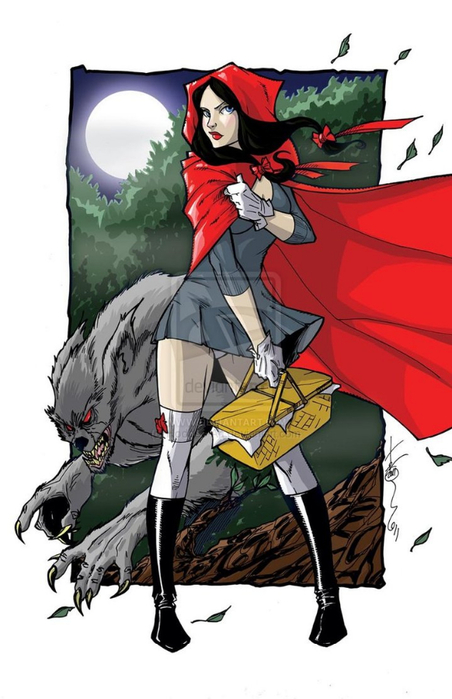 Surely, you yourself are interested in checking whether people are telling the truth. Your curiosity is completely natural and speaks of your desire to learn new things, gain experience and give the Wolf your own assessment. If you caught yourself in such feelings, follow your intuition, and you will succeed. I know that you will be able to recognize the cunning of the Wolf in time, especially when for a moment he seems to you quite charming and not devoid of a sense of humor. I am sure that you will never let the Wolf fool or outplay you - after all, you are very smart and capable. I also know that even if the Wolf offends you, you will be able to protect yourself, find a way out of a difficult situation. I believe in you my girl! Here is your basket, and let Common Sense, Faith and Ease lead you along the road! The wise mother spoke out the feelings, aspirations and condition of her daughter and gave her a blessing. In this case, we can assume that the events of the fairy tale would have developed differently.
Surely, you yourself are interested in checking whether people are telling the truth. Your curiosity is completely natural and speaks of your desire to learn new things, gain experience and give the Wolf your own assessment. If you caught yourself in such feelings, follow your intuition, and you will succeed. I know that you will be able to recognize the cunning of the Wolf in time, especially when for a moment he seems to you quite charming and not devoid of a sense of humor. I am sure that you will never let the Wolf fool or outplay you - after all, you are very smart and capable. I also know that even if the Wolf offends you, you will be able to protect yourself, find a way out of a difficult situation. I believe in you my girl! Here is your basket, and let Common Sense, Faith and Ease lead you along the road! The wise mother spoke out the feelings, aspirations and condition of her daughter and gave her a blessing. In this case, we can assume that the events of the fairy tale would have developed differently.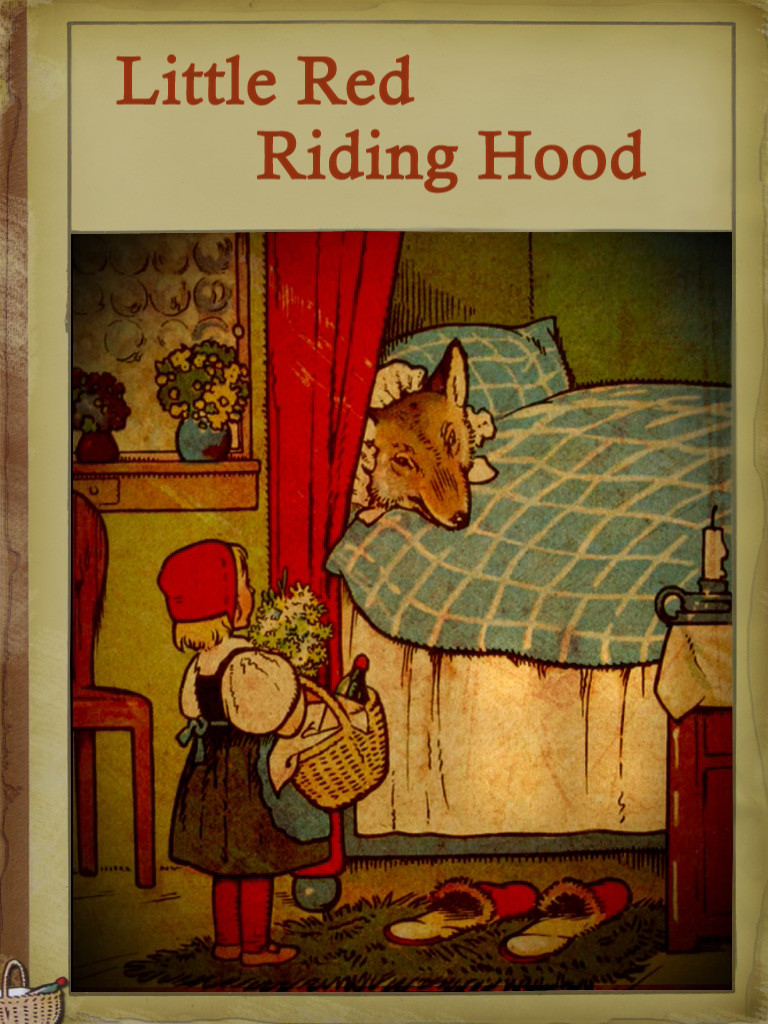 But that would be a different story.
But that would be a different story.
Fourth, , the story of Little Red Riding Hood illustrates the plot of a girl's meeting with a male predator and reveals the scenario of such relationships. We will talk about this in more detail with you in the section on female archetypal plots.
Which interpretation is closer to you? The article was prepared based on the materials of T. Zinkevich-Evstigneeva's book "The Secret Code of Women's Tales".
Cyber security through fairy tales: Little Red Riding Hood
How do you explain information security concepts to your children? There is a high probability that it doesn't. At best, you forbid them to do something on the Web or do not let them on the Internet at all. But prohibitions without explanation are counter-effective - often children themselves try to figure out why they are forbidden something, and end up in dangerous situations.
To the question “Why not explain cyber threats to children and how information security works?” parents usually make a boring face and say: “But this is so difficult.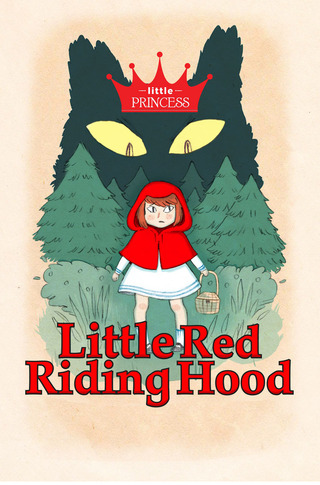 ” And meanwhile, there is nothing complicated in this, everything has already been explained. Textbooks "Cybersecurity for the little ones" were written hundreds of years ago. You know them under the name "Tales". All you need is to focus the attention of the child on the right aspects.
” And meanwhile, there is nothing complicated in this, everything has already been explained. Textbooks "Cybersecurity for the little ones" were written hundreds of years ago. You know them under the name "Tales". All you need is to focus the attention of the child on the right aspects.
Little Red Riding Hood
Take, for example, Little Red Riding Hood. This is a well-known European folk tale, the plot of which has been repeatedly retold by eminent cybersecurity experts - the Brothers Grimm, Charles Perrault and many others. Different versions of this story may differ from each other, but the main plot is the same. Let's take a step-by-step look at what's going on there.
- Mom sends her daughter to grandma with cakes and a pot of butter.
- Little Red Riding Hood meets the Wolf, who asks: "Where are you going?"
- Little Red Riding Hood replies: "I'm going to my grandmother and bring her a basket of pies and a pot of butter."
This is where cybersecurity comes in - you can start explaining the handshake procedure (the process of establishing communication between two participants) and the threats associated with this process!
Riding Hood has a program - to knock on the door, to receive the request "who is there?" and answer with a passphrase about pies so that her grandmother authorizes her and gives her access to the house. But for some reason, it gives out a passphrase without asking “who is there?”, which is what the attacker uses.
But for some reason, it gives out a passphrase without asking “who is there?”, which is what the attacker uses.
- Depending on the version
of firmwareof the fairy tale, the Wolf either sends Riding Hood along the long road, or invites her to collect a bouquet for her grandmother.
Both can be regarded as a denial of service attack - DoS. If the Wolf tries to log in to the grandmother's house after the arrival of the Riding Hood, then there is a high probability that he will not be allowed in. If the grandmother, of course, does not have sclerosis. Therefore, it is important for him to put Riding Hood out of action for a while so that she cannot complete her main procedure for delivering gifts in time.
- The wolf gets to Grandma's house first and logs in, answering the query "who's there?" code phrase. Grandmother gives him access to the house.
This is almost a textbook version of the Man-in-the-Middle replay attack. Although in our case it is more correct to call it Wolf-in-the-Middle. The wolf intervenes in the communication between the two parties, learns the handshake procedure and the passphrase from the client - and plays a message to simulate authenticity when trying to access the server.
Although in our case it is more correct to call it Wolf-in-the-Middle. The wolf intervenes in the communication between the two parties, learns the handshake procedure and the passphrase from the client - and plays a message to simulate authenticity when trying to access the server.
- The wolf eats the grandmother, lies down in her bed and covers herself with a blanket.
In fact, he organizes a phishing site, trying to imitate his grandmother. From the door, everything looks authentic - a grandmother's bed, someone is lying in it.
- Little Red Riding Hood comes to the house and to the question "Who is there?" gives out his catchphrase about pies.
This is a continuation of the MitM attack. Only now the Wolf, having learned the second part of the information exchange procedure, imitates normal behavior servers grandmothers. Hat, not seeing the catch, logs in.
- Riding Hood enters the house and begins to doubt why Grandmother has such big ears, eyes, teeth.
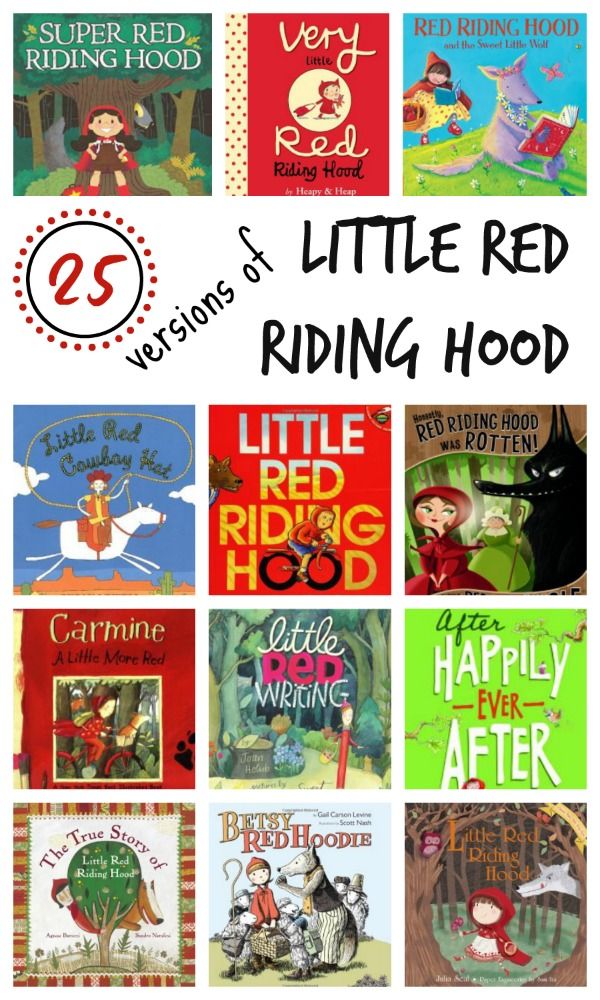 .. But in the end, satisfied with Wolf's vague explanations, she logs into bed and becomes a victim.
.. But in the end, satisfied with Wolf's vague explanations, she logs into bed and becomes a victim.
In real life, as in fairy tales, phishing sites are rarely 100% convincing. Attackers often leave questionable elements, such as a suspicious hyperlink. To avoid problems, you should be careful: say, if the supposedly grandmother sticks out too large a domain name, you need to urgently leave this site.
Unfortunately, Little Red Riding Hood sees the discrepancies, but ignores them. Here, apparently, it will be necessary to explain to the child that Riding Hood is acting stupidly. And that is not necessary.
- Lumberjacks come (in some versions - hunters), open the Wolf, and the grandmother with Little Red Riding Hood jump out safe and sound.
Stop, stop... Here the parallels with information security end. If you open the belly of a cybercriminal, then nothing good will come of it. However, we have not tried. And have nothing to do with those who have tried.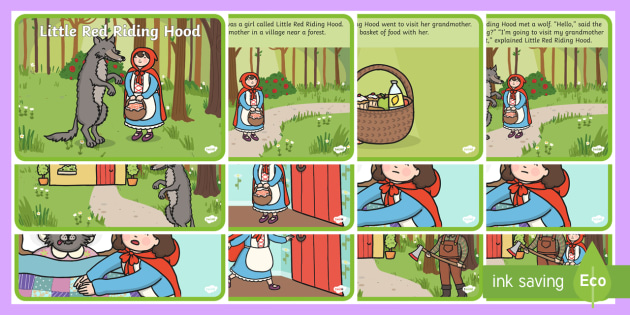
Cybersecurity in other fairy tales
I am sure that there is an cybersecurity subtext in any fairy tale - the main thing is to show it correctly. The Three Little Pigs talks about a script kiddy using a brute-force attack tool. The Snow Queen plants malicious shards in Kai and takes control of him.
Finally, “Puss in Boots” is a generally detailed account of an APT attack, during which a certain Cat first seizes the Cannibal infrastructure, and then, gaining a foothold in it, through complex machinations with reputation services, turns a fraudulent deal with the local government.
The supply chain as a threat to small businesses
Small businesses may not be the target of attackers, but this does not mean that they will not suffer from an attack through the supply chain. Here's how to avoid becoming collateral damage.
Tips
Fake financial regulators
In emails, scammers pretend to be representatives of government agencies in order to swindle users of their personal data and money.